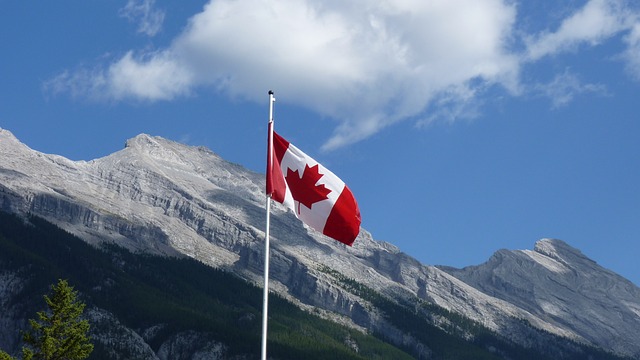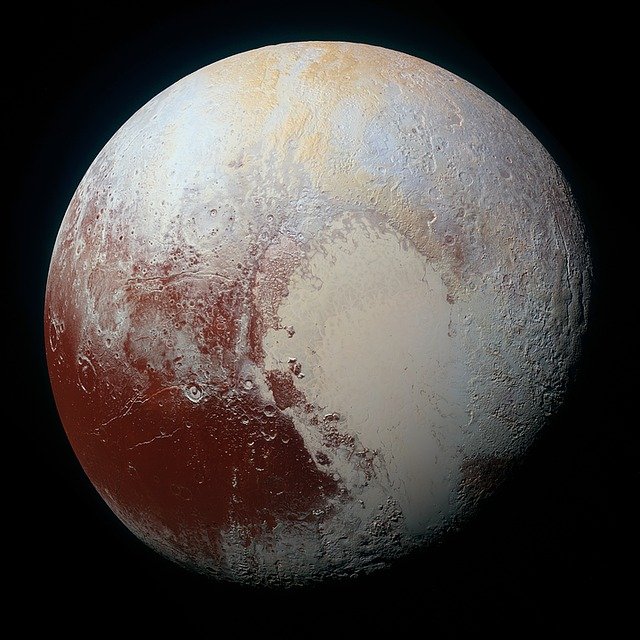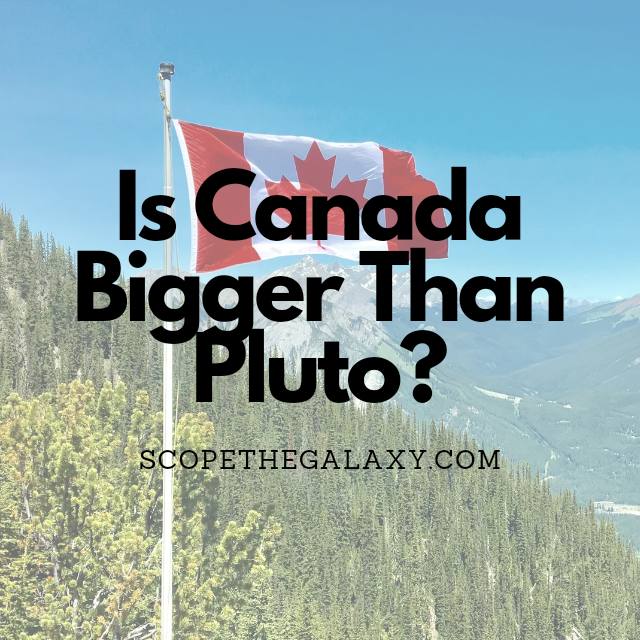*This post may contain affiliate links. This means we may make a commission if you purchase an item using one of our links*
Canada is the second largest country on Earth, whilst Pluto is only a dwarf planet. Still, there’s no comparison regarding which one is bigger as the former is a flat land mass with a surface area of 9.98 million square kilometers and a volume of 350 – 400 million cubic kilometers while Pluto is a spherical body with a surface area of 17.6 million square kilometers and a volume of 6.4 billion cubic kilometers.
For a more thorough breakdown of just how big each of these land masses are, continue reading as it will be broken down in more detail below.
How Big Is Canada?

Canada is one of the world’s largest countries, second only to the vast expanse of Russia. Still, with a population of just over 38 million, it remains one of the least densely populated countries, with more than 10 million people.
Canada has a total area of 9,984,670 sq. km, which encompasses its land mass and vast stretches of water. This country possesses an estimated 31,752 lakes, giving it the greatest number of lakes of any country in the world – they account for 9% of the country’s total surface area.
Without these, Canada would be smaller than both China and the US, possessing a land area of “just” 9,093,510 sq. km.
Canada has a width of 5,514km between its most extreme easterly point of Cape Spear across to the Yukon and Alaska boundaries. Its height – from Cape Columbia to Ontario – is 4,634km at its peak. And it has the longest coastline in the world, stretching over 240,000km. Canada is so big that the UK could fit inside it over 40 times.
Canada’s border with the USA is the longest in the world, with a length of 8,891km; this also holds the title for the longest undefended boundary in the world. In addition, the sheer size of Canada means that it borders three oceans: the Atlantic, the Pacific, and the Arctic. And from east to west, the country covers six time zones.
Roughly 24% of Canada’s total land area comprises mountains, with the tallest peak being Mount Logan which reaches a height of 5,959 meters. Still, the vast number of lakes reduces the average thickness of Earth’s crust. Scientists estimate that the thinnest strips of crust are around 29 km thick. But the average thickness is between 30 and 40 km.
If we take the average thickness to be 35 km and multiply it by the total surface area, we can calculate the estimated volume of Canada to be around 349,463,450 cubic km.
Canada’s diverse physical geography encompasses towering mountains, rolling plains, and expansive lakes. The Canadian Shield is a northern hilly region of swamps and lakes that contains some of the oldest rocks in the world. Further north, ice and snow dominate the landscape in the glacial Arctic regions.
How Big Is Pluto?

Even though Pluto is a planet, which would have most individuals automatically assume it to be bigger than most if not all countries or continents on Earth, this won’t always be the case, especially when looking at different measurements to determine its size.
For the longest time it was assumed that Pluto, the now officially recognized dwarf planet, had a surface area smaller than the largest know country on Earth, Russia let alone Canada.
This is because prior to the newest mission in 2015, it was estimated to have a surface area of 16.7 million km² but the New Horizons launch, which observed the planet in more detail than even before, came to a more accurate calculation of the dwarf planets surface area, coming out to be 17.6 million km².
Pluto does not have an excessive number of mountains on its surface nevertheless, some of its ice capped mountains are rather tall with certain mountain ranges reaching peaks as high as 3.55km.
In regards to the planets overall thickness, taking into account Pluto’s diameter of 2,376.6km, it would be many times the thickness of every country within Earth, whether it be Russia, Canada, the United States, China and so on.
All in all, even if purely based on surface area Pluto is similar to that of the largest continents on Earth and possibly even smaller than some of the continents(like Asia) on our blue sphere however, when thickness and volume comes into play, Pluto blows all of them out of the water.
After all a volume of 6.4 billion cubic km is nothing to scoff at, and hardly a number that the majority if not all the flat land on Earth could even combine to beat.
Summary
As Canada is a flat land mass, it only makes sense that it’d be smaller than the spherical object that Pluto is, despite the fact Pluto is a dwarf planet, much smaller than even our own Moon.
The dwarf planet has a surface area 1.7 times more than Canada’s and a volume around 15 – 20 times bigger. As a a result, despite the significantly lesser diameter, Pluto outclasses Canada in all the other physical metrics due to its spherical shape.

